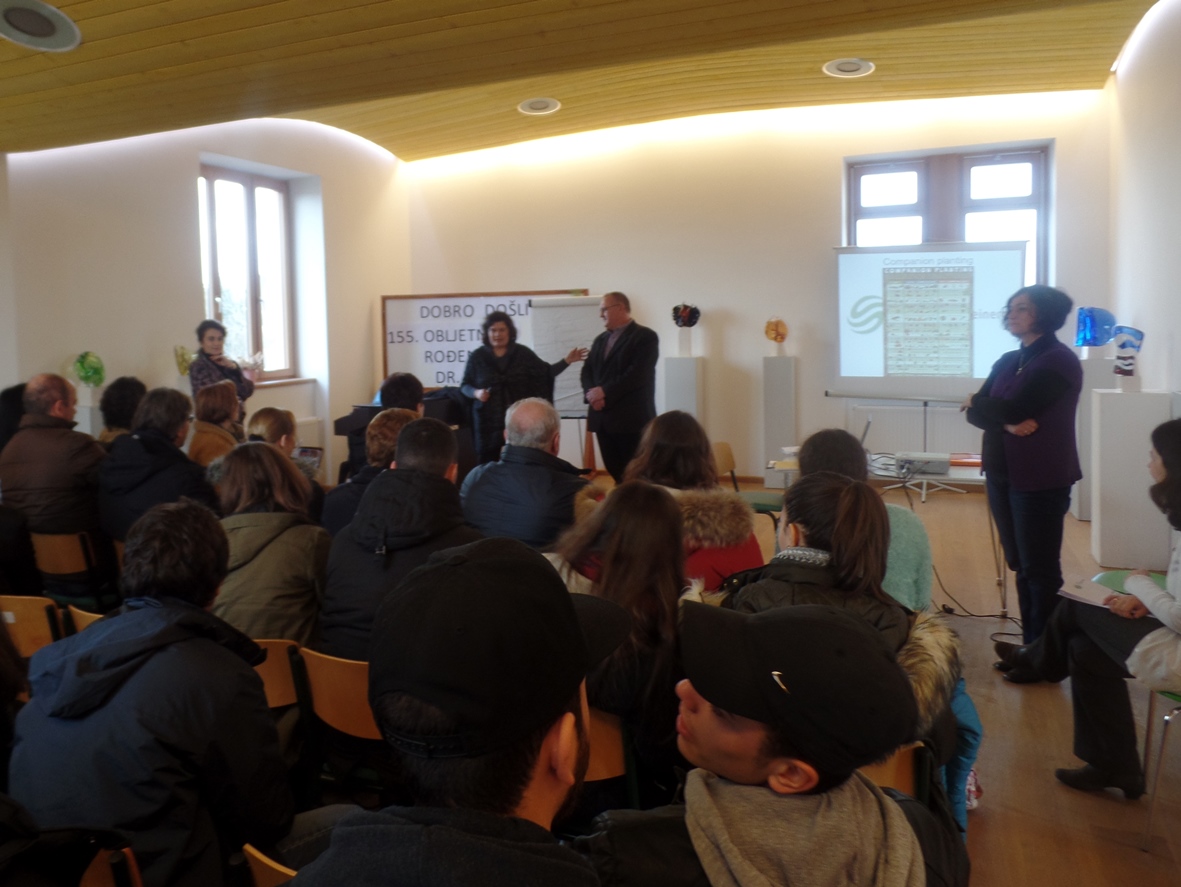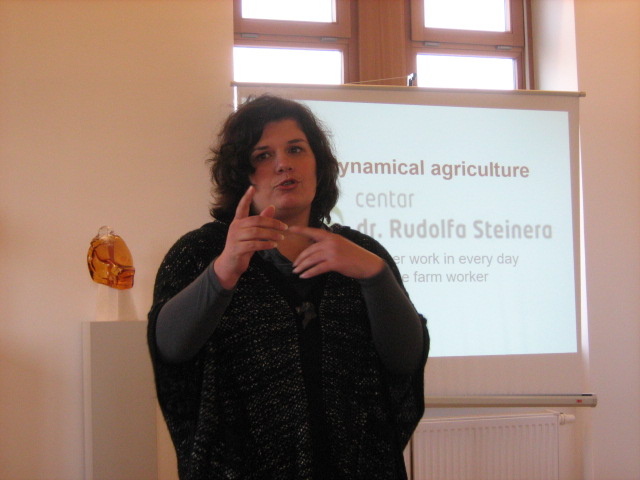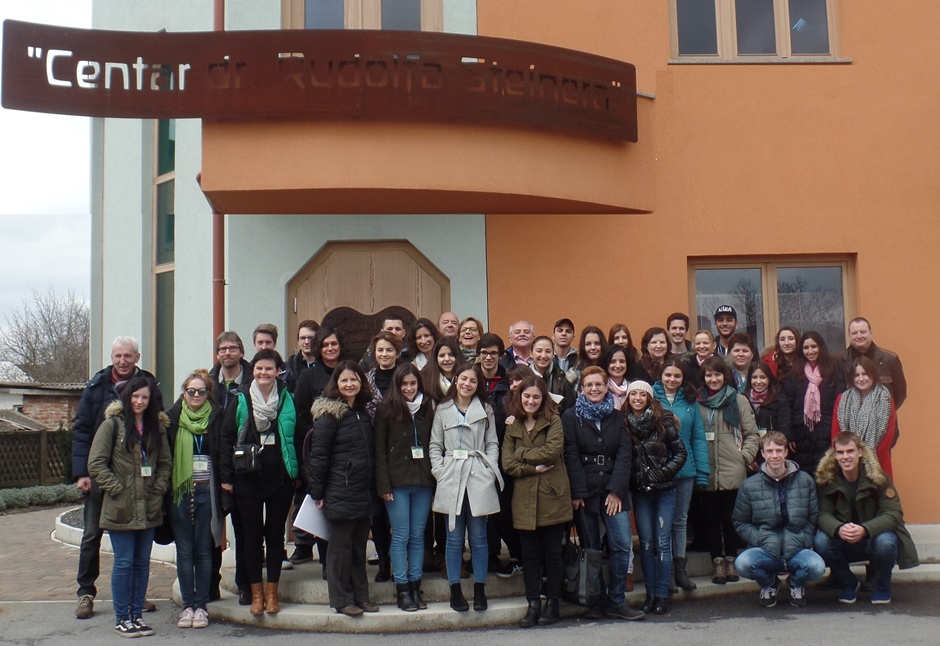During the project meeting held in Croatia on March 2016, to approach ecological entrepreneurship, we visited the Rudolf Steiner’s center and we had a lecture about biodynamic agriculture.

Even the building where the presentation took place was according to biodynamic principles and it was made from wood and other natural materials!
The first part of lecture was a presentation about what biodynamic agriculture is and its history.
Biodynamic agriculture is a form of alternative agriculture very similar to organic farming, based on Rudolf Steiner’s ideas. Biodynamics was the first modern organic agriculture. Its development began in 1924 with a series of eight lectures on agriculture given by philosopher Rudolf Steiner at Schloss Koberwitz in Sile Germany. Biodynamics has much in common with other organic approaches. It emphasizes on the use of manures and composts and excludes the use of artificial chemicals on soil and plants.

The second part of the lecture was about the importance of using organic fertilizers and the procedure of making them. Organic fertilizers are made of animal manure, with or without compost. We were told that the most effective manure is a mixture of cow and horse dung with a small percentage of pig and sheep dung. They also informed us that in order for the manure heap to be protected from loss of nitrogen and from excessive rain or sun, it should be covered with earth planted with chamomile, dandelion and valerian. Compost is made by any decayed vegetable matter, grass, straw, leaves, chaff from threshing, weeds, ditch-clearings, road-sweepings, kitchen-refuse, etc. The only exceptions are coal ashes and newspaper. the procedure of making comport pile is: 1st a layer of vegetable refuse about 25cm deep, then a layer of 3cm of earth, then again a layer of vegetable matter, and so on, until a height of 1,5 meter is reached. Generally speaking, from eight to twelve months are required before the compost is ready for use.
The last part of the lecture was about biodynamic procedures in terms of how they cultivate the biodynamic fields.
What impressed us most was the fact that they cultivate their fields based on the moon. Every year they make a calendar that describes its motion, in order to be able to know with accuracy the days it is better to deal with different kinds of plants.

Author: Silia Polychroniou
Supervising Teachers: Chrysanthi Korre, Eleni Zalavra